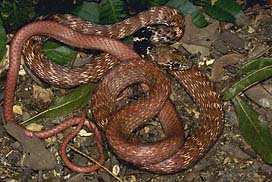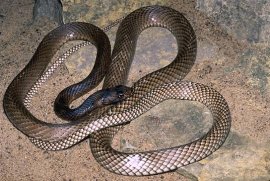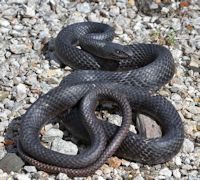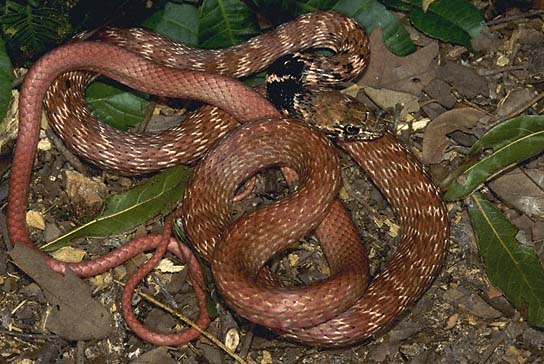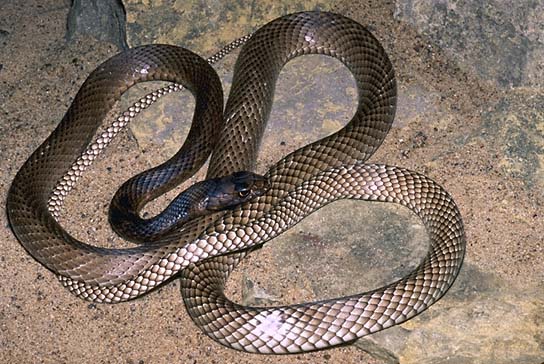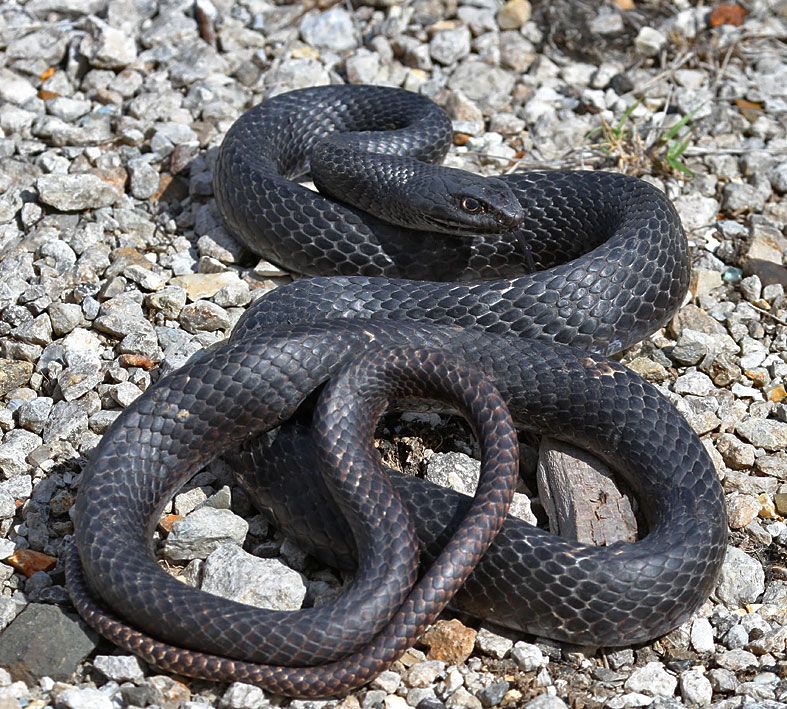Snakes
Description
36-102" (91.4-259 cm). Large, lithe, long-tailed and fast-moving. Western races generally yellow, tan, brown, gray, or pinkish; essentially patternless or with dark crossbars on neck. Eastern form: head and neck region dark brown to almost black, gradually fading to light brown toward rear. Occasionally all black. No pale side stripes. Scales smooth, in 17 rows (13 at rear of body). Anal plate divided.
Warning
If harassed, a Coachwhip may coil up, shake its tail, and strike repeatedly, often at the face. Its bite is not venomous.
Sonoran (M. f.
cingulum), long, dark reddish-brown bands separated by shorter,
paired pale pink bands, or uniformly reddish-brown or black; sc.
Arizona into Mexico.
Baja California (M. f. fuliginosus),
2 phases: yellow or light gray with zigzag pattern of black bands
along body, or dark gray-brown above with lined pattern on sides;
extreme s. California through Baja California.
Lined (M. f.
lineatulus), light gray or tan, each dorsal scale on forepart of
body has a dark streak down center, underside of tail salmon pink;
sw. New Mexico into Mexico.
Western (M. f. testaceus), light brown, olive, yellowish, or pinkish-red above, some with short dark crossbands on neck and wide crossbands on forepart of body, double row of dark spots on belly; extreme sw. Nebraska, w. Colorado, w. Kansas, w. Oklahoma, e. New Mexico through w. and c. Texas into Mexico.
Breeding
Mates in spring. Clutches of 4-16 granular-surfaced eggs, 1-2 1/4" (25-57 cm) long, are deposited June to July, hatch in 6-11 weeks. Young 12-16" (30-41 cm) long.
Habitat
Dry, relatively open situations; pine and palmetto flatwoods, rocky hillsides, grassland prairies, desert scrub, thorn forest, and chaparral; sea level to ca. 7,000' (2,150 m).
Range
Se. North Carolina, sw. Tennessee, extreme sw. Illinois, extreme sw. Nebraska, e. Colorado, nc. New Mexico, sw. Utah, wc. and s. Nevada, and c. California, south through Florida, Texas, and California to c. Mexico.
Discussion
Perhaps our fastest snake. Prowls about during the day in search of grasshoppers, cicadas, lizards, snakes and small rodents. When pursued, may take to a tree or disappear into a mammal burrow. Record longevity is 16 years, 7 months.

